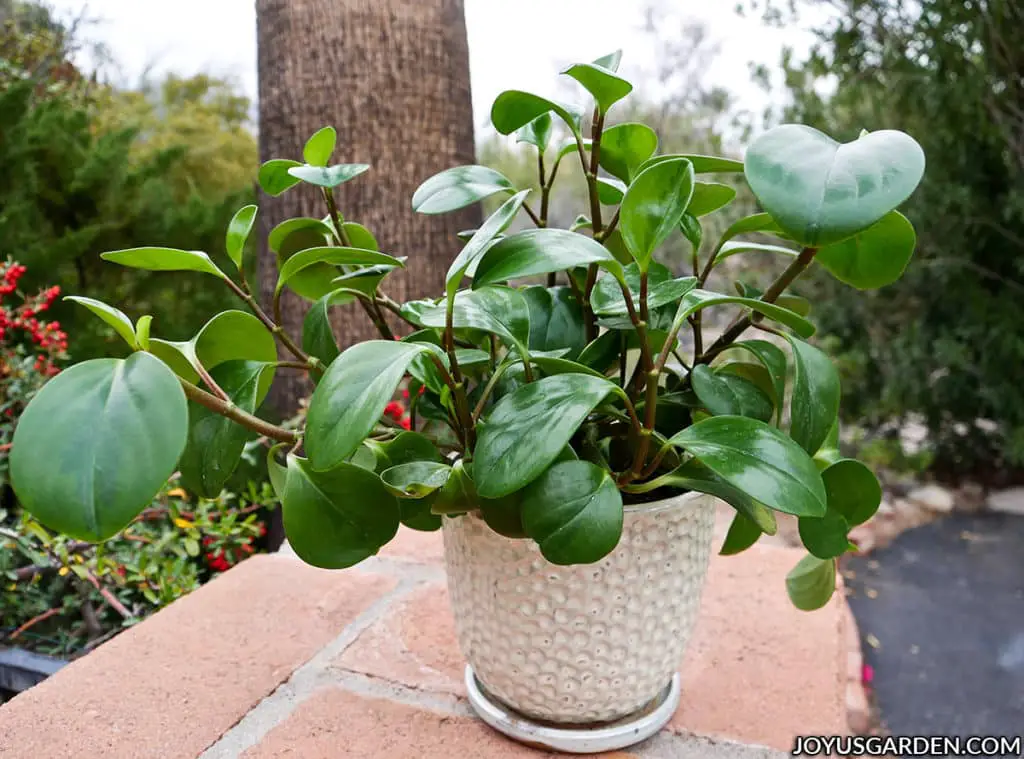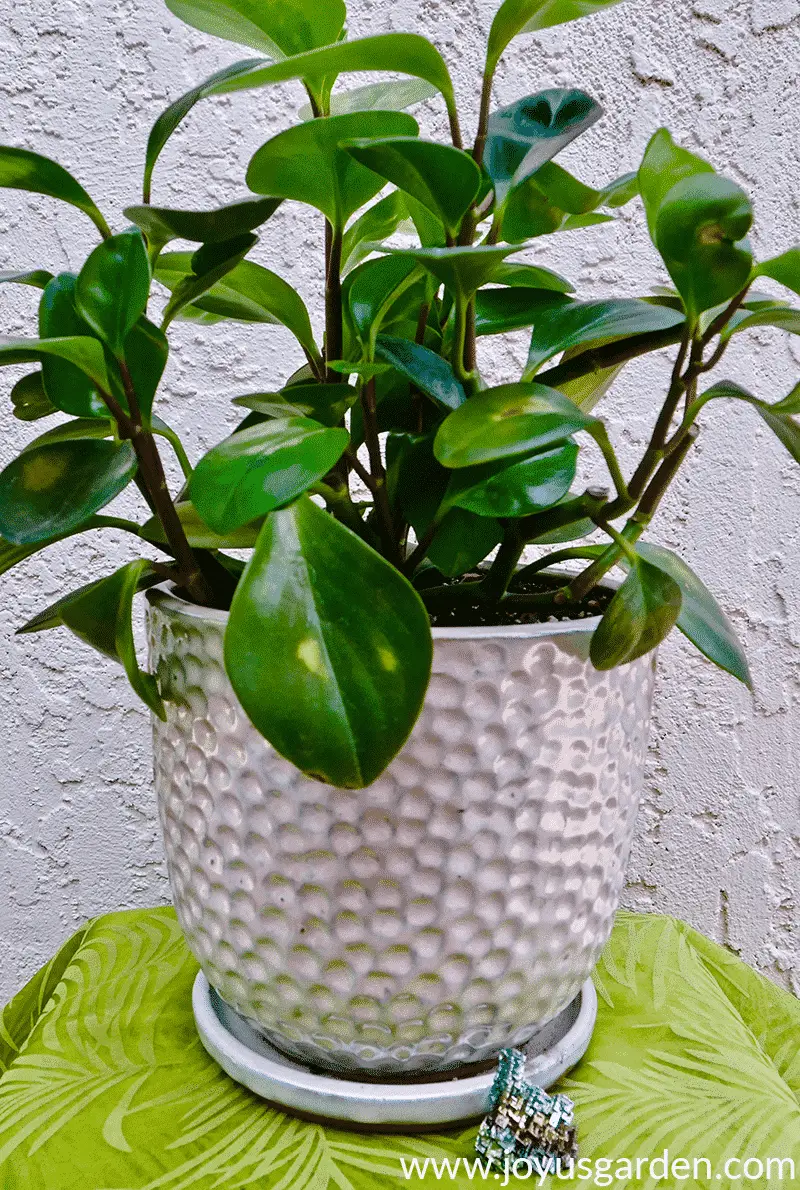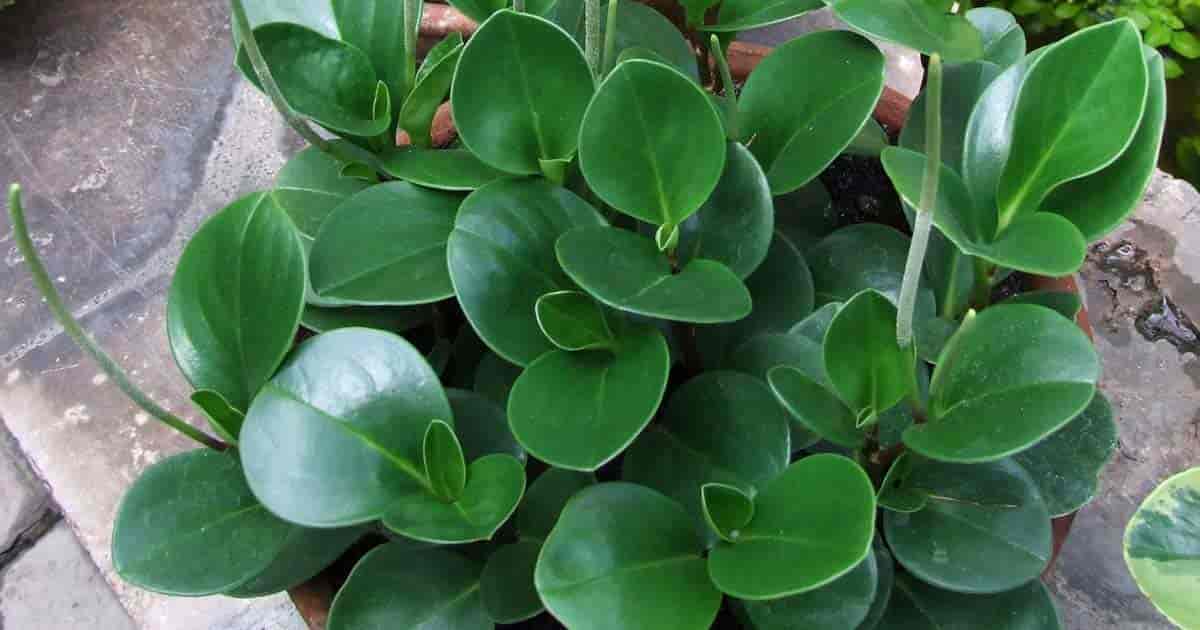Table of Contents
Peperomia Obtusifolia- A Wonderful genus To Plant!
Decorative or dwarf pepper peperomia obtusifolia is an indoor decorative plant. It has a multitude of leaf forms as well as structures and colors. Every peperomia obtusifolia is unique. It brings about a great effect when kept don’t the windowsill or used as a decorative piece on the table.
Peperomia belongs to an amazing genus of tropical plants native to the Caribbean, South America, and Mexico. There are over 100 species known of this wonderful plant. If you have not been very fortunate in taking care of and growing houseplants yet, peperomia is something you must consider.
It bears green and free multicolored leaves which makes it even more amazing. Collectors will definitely enjoy this hugely versatile and amazing plant. Let’s see various important aspects in taking care and growing Peperomia obtusifolia.
Peperomia Obtusifolia

Here are all the aspects you need to know about Peperomia Obtusifolia.
Plant profile of Peperomia Obtusifolia
- It belongs to the pepper growth family.
- Found mostly or originated in South and Central America.
- Botanical names is Peperomia Obtusifolia.
- Its trivial names are dwarf pepper, decorative pepper, and fleshy peperomia.
- Growth is compact, bushy, and upright. It grows 15 to 30 cm generally but sometimes may reach up to 35 cm as well.
- Leafs born by Peperomia Obtusifolia are fleshy, shiny matter, evergreen, patterned, multi-colored, and red to brown.
- The form of leaves is elliptical mostly upside-down with blunt leaf tips.
- The flowering period is from early summer to autumn.
- It is slightly poisonous.
It has its origins in South America where it has been seen to grow under the trees. It is the most popular variety of peperomia Obtusifolia and in total there are nearly 1600 varieties found yet.
Now that you know all about this plant’s profile, let’s see the care guide.
Care For Peperomia Obtusifolia
By the name decorative pepper, you might be assuming it is a beautiful plant but it is not very attractive, furthermore, its leaves have a cleaning effect on the air and thus it is used to decrease the concentration of chemicals like formaldehyde inside your house nearly 47%. To maintain these special abilities of the peperomia Obtusifolia plant, you must keep in mind their nutrient supplies and water needed as well as select a perfect location for the plant to thrive.
If everything is in place, you will find Peperomia Obtusifolia to be a perfect choice as an indoor plant.
Location for Peperomia Obtusifolia
Selecting a good place to grow these plants totally depends upon if you are selecting the location for a colored leaf variety of peperomia or a merely green-leafed variety. Various having green leaves thrive well on half to bright shady locations and must be protected from sunlight or revealed to shadow in summer. A spot near your window facing east or west would be great for keeping this variety.
Peperomia Obtusifolia having colored leaves on the other hand thrives better in brighter spots with few hours of exposure to the sun preferably in the morning or evening. The higher the white or yellow shares on the leaf, the more glorious the location of the plant.
This is the only way using which you can see different color variations in your plant thus getting a multicolored Peperomia Obtusifolia. If your plant is kept at a place too dark, it will not remain multicolored and go green later. You should avoid direct exposure to the sun, the same counts for temperature differences.
The decorative Peperomia Obtusifolia can be standing at a spot outdoors during summer which is protected from direct sunlight, All the varieties of Peperomia Obtusifolia love warmth and normal temperature ranging from 18 degrees to 23 degrees. You must ensure that the temperature where these plants are kept does not fall under 15 degrees.
The soil needed for Peperomia Obtusifolia
One should always keep track of the permeability of water inside the soil when choosing the correct substrate to prevent soil wetness which may cause rotting in the plant when not checked for long. Substrates based on peat and mixed with sand and gravel are appropriate for thee plants. Sand and gravel should be used because decorative or dwarf plants need high levels of minerals from the substrates.
A mix of orchard substrates or clay granulate with potting soil and peat moss is tolerated well. Even with all such permeable substrates sued, one still needs additional drainage in the pot to throw excess water out.
Watering needs
This plat has its origins in humid, warm, and consistently moist regions, which means when you duplicate such living conditions for this pant, it will grow amazingly well. This is the reason you should adapt the water supply to all the mentioned conditions in your room indoors.
- One must water the plants carefully.
- The substrates you use should neither be too moist nor completely dried.
- Short-term dryness can be tolerated.
- Ideally, you should let the substrate dry out on the surface itself before watering the plant.
- When watering, if possible, you can use lukewarm water and lime-free water.
- rainwater is also great for their growth.
- Before using tap water for watering, it must be a day old.
- Besides watering the plant, ensure sufficient humidity is needed for good growth.
- If your plant stands too dry concerning air in your room, there might be a parasitic infection.
- Occasionally spraying the plant will deal with this issue.
Fertilizing
One does not require to fertilize the plant in the year it has been bought or replanted. It is already being supplied with fertilizer in a monthly cycle this year during its growth stages from April to August.
The fertilizer used later on should only be used in a weak concentration so that you do not over-fertilize the plant and cause problems within. For green plants, ordinary fertilizers, and cacti fertilizers and appropriate.
Cutting
It is already a low-growing plant, so the classical back cut that you use on other plants is not mandatory for this one. The breaking or spreading of the shoot tips in the spring season can boost the growth of new shoots in the side thus making a bushier growth. Shoots of the swinging dwarf plant which is planted for instance in light can be reduced by third in the spring season. Otherwise, dead and withered plants parts can be removed after winter with the help of shape shears.
Replanting

The substrates used leaches out after a while which is one reason why these plants should be again planted in fresh earthy soil. This becomes the case after every 2 or 3 years. The ideal time for doing so lies in spring between April and March.
Here are some things to keep in mind. The flat rooter Peperomia Obtusifolia plants grow a relatively small amount of roots which are tiny in general. That is the reason the pot must not be too large. Half-length pots are suggested with lights and flat bowls so that the water drainage remains good and imperative.
Temperature and humidity
Peperomia Obtusifolia plants outdoors are hardy to zone 10. They should not be exposed to a temp less than 30 degrees Fahrenheit. As these are tropical plants, they prefer a warm and steamy environment especially in summer when they grow most actively. If you are giving your plant an outdoor vacation during the summer months, you can also place it on a tray of water and pebbles to increase humidity or consider investing in a small-scale humidifier.
Pruning
Lightly pruning your peperomia obtusifolia in the early spring months to correct any sparse and leggy growth is appropriate. Pinching back its stems will aid in maximizing the plant’s lush appearance and encourage branching. remove the end of the stem and first set of leaves using shears. You can just filch them off using your fingers too.
How to propagate
You can propagate your peperomia obtusifolia at any time of the year, although the most recommended time is spring when it is merely likely to grow actively. If you are planning to prune your plant already in the springtime, you can take the leggy growth of your plant which seems to be extra, and then propagate it. here’s how to do this:
- First, you want sterile running shears nr snips, a plastic wrap, a brightly lit location, potting soil, and a small pot.
- Now you have to cut off a leaf comprising at least an inch of its stem from the original or mother plant.
- Place this cutting in a very small container filled with appropriate potting soil. place it in a bright place where indirect sunlight falls. Cover using plastic wrap to form a mini greenhouse effect environment to help the plant retain all the moisture within.
- Water the plant consistently and do not ever let the soil dry out. Roots will start forming within a few weeks, later you can transport the cutting into a slightly larger container once it has outgrown the original one.
How to grow peperomia obtusifolia from seeds
You know how to propagate the plant, but what if you have seeds only? To grow this beautiful and useful plant from seeds, you will require a soulless seed mix, a warm and bright sunny spot, and sufficient water for the seeds to germinate in this environment. Keep the soil moist consistently until the seeds have germinated. It might take anywhere between 15 to 30 days for the seedlings to be visible.
Trabplstas the emerging seedlings into another container with a soil pH between 6 to 6.5 as orchid mix works pretty well in this pH. Place the plant in indirect sunlight where the light falls. Avoid watering the plant excessively.
How to get my peperomia plant to bloom
peperomia plants generally do not flower and if they do, it’s pretty rare. Their unscented flowers look like spindly spikes of greenish and brownish white color. They do not however appear like flowers, you may even have a perception that they are offshoots. You can either wait for the flower to wither and fall off or cut them off. The natural blood time of plants in summer, but with correct temperature and lighting mimicking summer, it may blood indoors anytime.
Common issues with peperomia obtusifolia

Peperomia is one of the lowest maintenance plants and does not even need a lot of water to grow. Once you have identified a good location with bright sun but not direct sunlight, and you check the soil once in a while, they grow pretty well. However, additional care is needed f your plant starts showing some signs. These are common issues a peperomia may face in its lifetime:
1. Droopy and discolored leaves with the rotting smell
Root rot is a condition that is caused when you overwater the plant. This disease causes a rotting smell in the plant. If there is fungal inception, you might see mushy stems. To prevent fungal diseases and root rot within your plant make sure its soil is dried completely. If you catch the disease quick enough, you can cure and remedy the plant without having to throw it.
Sterilize the potting medium using a diluted bleach solution. You will require a well-draining fresh pot for this. Pull out the infected plant from the previous pot and cut away all the rotting, brown, and black mushy roots away. Wash the healthy roots remaining in the plant. Now lay the plant out and wait for the roots to dry for some more hours. then. You can re-pot the plant in a clean pot with all new topsoil ingredients.
2. Yellowing and curling your leaves
In many cases, when the leaves of this plant turn yellow and start curling in, it simply means the leaves are getting too much water. You must remove the yellowed leaves. You can also remove the plant and some rocks beneath the soil to improve the drainage. This will prevent the bottom of those roots from sitting in water.
3. Deformed leaves
Ring spots are another disease in plants. It is caused by a virus called cucumber mosaic virus and is diagnosed when deformed leaves start appearing. Even this disease is seen when the plant is watered excessively. Pull the deformed leaves and the plant will again start growing healthily. To prevent the disease from occurring again, make sure you are wearing it when the soil is dried and do not overwater.
4. Wilting
If you ever notice that your plant appears to be wilting, then the reason is it’s not getting sufficient air to the roots. If necessary, re-pot your plant and use more gravel inside the potting medium and soil.
5. Moldy soil
Overwatering the plant also causes the growth of whitish molds on the soil’s surface. To prevent such conditions from occurring, you must water the soil only when it is required. To fix your soil, removing the top-most layer and replace it with an appropriate mix of pot soil. If the mold is deep down, wash the pot completely and replace all the soil with a good potting mix.
Also, note that this plant will turn to mush outdoors when kept at freezing temperature. If you reside in zones less than 10 on the hardiness zone map, you should bring your plant indoors and provide the necessary condition for healthy growth. Some people do not water peperomia at all during wintertime.
6. Leaf drop
If your peperomia obtusifolia is losing the leaves and you are not able to water the plant, you must try to move the mix to a spot a little more bright. The spot should not have direct sunlight falling on the plant but it should be relocated near a window with sunlight.
With proper conditions, these plants can thrive for long even when kept in the same medium. They only require little water and indirect sunlight with good soil.
When kept indoors, peperomia obtusifolia rarely needs repotting and it is a slow-growing plant. However, if you reside in the correct hardiness zone and the plant is kept outdoors, you will notice an increased growth rate.
7. Parasites
Parasites like spider mites can infect the plant. In wintertime, warm and dry heat may lead to infestation with spider mites. Leaf axils are easier to spot at this time. One can reduce the infestation significantly by showering the plant’s leaves. The substrate must b covered when spraying. You can use neem oil-containing or predatory mites containing preparations for spraying the plant to get rid of spider mites.
Precautions

Although these plants are not known to be highly toxic, you must keep them out of reach of small children and pets in your house. You can also buy plants that are friendly to pets or keep your plants at a spot where children cannot reach them.
Overall, these plants are easy to maintain and provides fresh air free from formaldehyde making them a good choice for your house.
This was all about the peperomia obtusifolia plant and some care tips.

